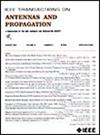混合变分量子算法改进了子全域基函数方法,学习效率高,鲁棒性好
IF 5.8
1区 计算机科学
Q1 ENGINEERING, ELECTRICAL & ELECTRONIC
引用次数: 0
摘要
子全域基函数法是分析大规模有限周期结构电磁特性最有效的方法。近年来,人工神经网络(ann)被用于快速预测SED基函数的展开系数,而无需填充互耦矩阵,从而加快了该方法的速度。然而,由于其经典的计算范式,预测模型的训练过程可以进一步改进。本文提出了一种新的变分量子算法(VQA)增强SED基函数方法,并首次利用量子计算范式对lfps进行了分析。在我们的算法中,阵列特征被扩展和编码到几个量子比特上,得到的量子态通过参数化量子电路统一地转换成展开系数。并在量子模拟器上进行了数值实验。实验结果表明,该方法能够准确、快速地分析lfps。此外,量子启发模型对角单元和边缘单元(ECs)的学习效率提高了27%-62%,对所有类型的单元的鲁棒性提高了22%-59%。本文章由计算机程序翻译,如有差异,请以英文原文为准。
Hybrid Variational Quantum Algorithm Enhanced Subentire-Domain Basis Functions Method With High Learning Efficiency and Better Robustness
The subentire-domain (SED) basis functions method is the most effective method for analyzing the electromagnetic (EM) properties of large-scale finite periodic structures (LFPSs). Recently, artificial neural networks (ANNs) have been employed to accelerate this method by rapidly predicting the expansion coefficients of SED basis functions without filling mutual coupling matrices. However, the training processes of prediction models can be further improved due to its classical computational paradigm. In this article, a novel variational quantum algorithm (VQA) enhanced SED basis functions method is proposed and the quantum computing paradigm is utilized to analyze LFPSs for the first time. In our algorithm, the array features are expanded and encoded onto few qubits, and the resulting quantum state is unitarily transformed into expansion coefficients by the parameterized quantum circuit. In addition, the algorithm is deployed on the quantum simulator for numerical experiments. The experimental results demonstrate that our method can accurately and quickly analyze LFPSs. Furthermore, the quantum-inspired models achieve 27%–62% improvements in learning efficiency for corner and edge cells (ECs), and 22%–59% improvements in robustness for all types of cells.
求助全文
通过发布文献求助,成功后即可免费获取论文全文。
去求助
来源期刊
CiteScore
10.40
自引率
28.10%
发文量
968
审稿时长
4.7 months
期刊介绍:
IEEE Transactions on Antennas and Propagation includes theoretical and experimental advances in antennas, including design and development, and in the propagation of electromagnetic waves, including scattering, diffraction, and interaction with continuous media; and applications pertaining to antennas and propagation, such as remote sensing, applied optics, and millimeter and submillimeter wave techniques

 求助内容:
求助内容: 应助结果提醒方式:
应助结果提醒方式:


